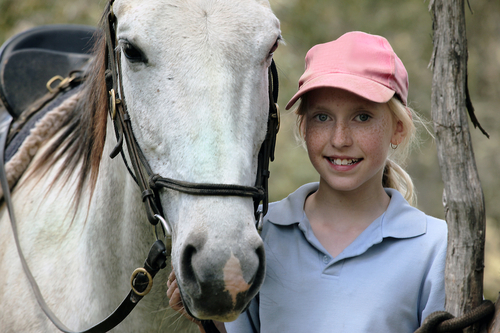During the past several months, therapeutic horseback riding has been in the news. There is much interest, and perhaps a little skepticism, in the legitimacy of equine-assisted activities and therapies (EAAT). As a global authority in the EAAT field, the Professional Association of Therapeutic Horsemanship International (PATH Intl.) wishes to offer some clarity and perhaps a re-introduction for some to the organization and the work it does on behalf of those with special needs.

Emotional and physical support through interaction with horses
Nearly 48,000 children and adults with challenges find strength and independence through therapeutic horseback riding each year at PATH Intl. member centers.
PATH Intl. (formerly the North American Riding for the Handicapped Association) was formed in 1969 to promote equine-assisted activities and therapies (EAAT) for individuals with special needs. Nearly 48,000 children and adults with physical, mental and emotional challenges find strength and independence through the power of the horse each year at more than 800 PATH Intl. member centers.
In 2010, 349 of the 800+ centers reported having participants with multiple sclerosis, and many centers have working agreements with local MS chapters. More than 500 centers reported having participants with Down syndrome, and an amazing 610 reported serving participants on the autism spectrum. Participants range in age from four to over 65.
In addition to therapeutic riding, PATH Intl. centers offer a number of therapeutic equine-related activities, including hippotherapy, carriage driving, interactive vaulting (similar to gymnastics on a horse), competition (including dressage), equine-faciliated psychotherapy and learning, ground work and stable management.
More recently, programs offer services in human growth and development to serve wide-ranging audiences for such educational purposes as leadership training, team building and other human capacity enhancement skills for the workplace and for daily use.
Through our instructor certification and center accreditation programs, plus a wide variety of educational resources, including an annual conference with one thousand attendees, the association helps members start and maintain successful EAAT programs. There are more than 43,000 volunteers, 3,800 certified instructors, 6,000 equines and thousands of contributors from all over the world inspiring and enriching the human spirit at PATH Intl. Centers.
EAAT helps people from all backgrounds, all ages and all walks of life (including all income levels). These profound life-enriching changes come in a variety of ways, including increasing strength and flexibility, improving motor skills, promoting speech and cognitive reasoning, and building relationships and social skills.
The individuals served by PATH Intl. members may face any number of challenges, including paralysis, multiple sclerosis, autism, Down syndrome, substance abuse, traumatic brain injury, post-traumatic stress disorder or amputation. In many instances, licensed physical therapists, occupational therapists and psychologists are involved.
PATH Intl. is a 501(c)(3) as are most of its member centers. We rely on donors, sponsors, grants and possibly our most important resource—volunteers. However, our centers run the gamut from one- or two-person operations with shoestring budgets to centers with numerous staff members and programs with large budgets. The horses at our centers are typically not international show horses, and our centers use horses that are oftentimes donated to them or that they themselves own.
Simply put, lives are changed through interaction with horses. Take for example, Carly Renguette, the winner of the 2011 PATH Intl. Youth Equestrian of the Year award. Carly had sustained a cervical spinal cord injury that left her a spastic quadriplegic and placed her first on a ventilator then in a wheelchair. Through therapeutic horsemanship,
Carly progressed from a wheelchair to a walker and is now using arm crutches. Just recently she walked independently. Her dream now is to become a physical or occupational therapist, using hippotherapy to help others.
Carly is not the only one. There are many other stories we could tell you; please visit our website (www.pathintl.org) to read the inspiring stories of other individuals whose lives have been changed and enriched by the equines with whom they partner.
One of the greatest ways to see what we do firsthand is to visit a PATH Intl. Center. Visit our website, click on Find A Center and search for member centers. Visit one and discover why we love the work we do and why we are grateful for people who can testify firsthand to the benefits of therapeutic horsemanship.
